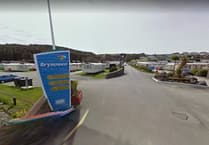The unmanned aircraft was said to have been testing a new ice detection system at the time of the crash on 3 February, 2017.
And the hearing was told that, despite an extensive underwater search, no wreckage was ever found, although fragments of the aircraft were later recovered from shore.
Investigators concluded that a build-up of moisture in one of the Watchkeeper’s pitot sensors caused its automated flight systems to malfunction leading the aircraft to stall.
And the report reserved heavy criticism for Thales, the aircraft’s operators, guardians of the Watchkeeper programme for the British military.
It stated that Thales and the MoD did not fully understand how Watchkeeper worked, adding that they did ‘not make the most of simulation or from the exploitation of data and providing a disproportionate level of complexity to those who fly Watchkeeper’.
The report added: “Watchkeeper was designed to deliver a flexible, 24-hour Intelligence, Surveillance, Target Acquisition and Reconnaissance system for primary use in the land environment.
“Having the ability routinely to operate in cloud and precipitation throughout the year is therefore an important pre-requisite.
"The necessity to conduct icing trials is a given, but so should be confidence in the basic requirements to do so, such as the correct operation of the pitot system, prior to flight.
"There are other areas that demand attention — for the design organisation in improving its safe conduct of trials and for the MoD in providing effective ‘operator’ supervision.”
In its conclusions the report called for "a fully representative simulator for pilot and crew training, this is long overdue" along with "a means of enabling its post-crash location should now be compelling".
See this week’s South Ceredigion paper for the full story, available in shops and as a digital edition now




